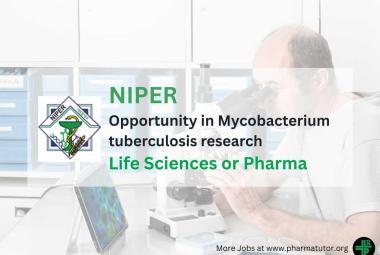About Author: C. Stalin*, S. Kamalasivam, E. Hariharan,
Pallavan College of Pharmacy,
Kancheepuram, Tamilnadu.
Abstract:
Tabernaemontana divaricata a common garden plant in tropical countries has been used as a traditional medicine. However, no recent review articles of T. divaricata, particularly discussing its pharmacological properties, are available. In present study, the antioxidant activity of ethanolic extract of flowers and leaves of Tabernaemontana divaricata linn were evaluated . Free radicals have been regarded as a fundamental cause of different kinds of diseases. They cause biochemical damage in cells and tissues, which result in several diseases such as arteriosclerosis, ischemia-reperfusion injury, liver disease, diabetes mellitus, inflammation, renal failure, aging, cancer, etc. Compounds that can scavenge free radicals are thus effective in ameliorating the progress of these related diseases. T.divaricata L. known locally as ‘Nandiyavattom’ belonging to the family, Apocynaceae a common plant in India, profoundly used in Ayurvedic medicine as Anthelmintic, Anti-inflammatory, Anodyne, Diuretic property.1 The objective of the present study was designed to investigate the antioxidant efficacy of ethanolic extract of leaves and flower of Tabernaemontana divaricata (TALE & TLFE). Invitro antioxidant activity such as Reducing power ability , NBT reduction assay, Deoxyribose degradation assay was performed and was concluded that the ethanolic extract of leaves and flowers of Tabernaemontana divaricata showed significant antioxidant activity.
[adsense:336x280:8701650588]
Reference ID: PHARMATUTOR-ART-1127
Introduction
Free radicals have been regarded as a fundamental cause of different kinds of diseases. They cause biochemical damage in cells and tissues, which result in several diseases such as arteriosclerosis, ischemia-reperfusion injury, liver disease, diabetes mellitus, inflammation, renal failure, aging, cancer, etc. The main characteristic of an antioxidant is its ability to trap free radicals. Highly reactive free radicals and oxygen species are present in biological systems from a wide variety of sources. These free radicals may oxidize nucleic acids, proteins, lipids or DNA and can initiate various types of degenerative diseases.6 T.Divaricata L (Family:Apocynaceae).Commonly calledas Nandiyavattom found in the dry regions of Indiaand Sri Lanka.The beneficial properties of T. divaricata are, anti-infection, anti-tumor action, analgesia and the enhancement of cholinergic activity in both peripheral and central nervous systems. The augmentation of cholinergic function may be of therapeutic benefit for many neurodegenerative diseases, particularly myasthenia gravis and Alzheimer's disease.2 chemical constituents include alkaloids and non-alkaloid constituents such as terpenoids, steroids, flavonoids, phenyl propanoids, phenolic acids and enzymes which played an important role in bringing out the activity.
OBJECTIVE:
T.Divaricata (Linn.)a much branched shrub with smooth brown bark and closely pubescent brachlets have been reported for various pharmacological activities to treat diseases like Anthelmintic, Anti-inflammatory, Anodyne, Diuretic property. An attempt was made to correlate these activities with generation of free radicals and to evaluate the selected plant for its antioxidant potential.2
EXPERIMENTAL METHODS
Fresh leaves and flowers of the plant were collected from Coimbatore district, Tamilnadu, India during the month of July, 2010. Theplant was identified and authenticated by the Dr. G.V.S. Murthy, Joint Director, Botanical Survey of India (BSI), Tamilnadu Agricultural University campus, Coimbatore.
[adsense:468x15:2204050025]
Extract preparation:
The leaves and flowers of Tabernaemontana divaricatawere collected, thoroughly dried under shade and powdered mechanicallyand sieved through No.20 mesh sieve. The finely powdered leaves and flowers were kept in an airtight container until the time of use.3
Extraction procedure for leaf
The extraction was carried out by cold maceration and mechanical shaking method. The solvent used was 95% ethanol. About 60 g of powder was soaked with 600ml of 95% ethanol for 12 h and then macerated at room temperature using a mechanical shaker for 4 h. The extract was filtered off and the marc was again soaked with the same volume of 95% ethanol for 12 h and then further extracted for 4h and filtered. The filtrates were then combined concentrated under reduced pressure and evaporated at 400C. The percentage yield of the T.Divaricata Leaf extract (TALE) was 27.4%.3
Extraction procedure for flower
The extraction was carried out by continuous hot percolation method using Soxlet apparatus. The solvent used was 95% ethanol. About 50 g of powder was extracted with 400 ml of solvent. The extract was concentrated to dryness under controlled temperature between 40-50ºC. The percentage yield of the T.Divaricata flower extract (TLFE) was 18.2%.3
NOW YOU CAN ALSO PUBLISH YOUR ARTICLE ONLINE.
SUBMIT YOUR ARTICLE/PROJECT AT articles@pharmatutor.org
Subscribe to Pharmatutor Job Alerts by Email
FIND OUT MORE ARTICLES AT OUR DATABASE
IN VITROMETHODS EMPLOYED IN THE STUDY
Reducing power ability
Reducing power ability was measured by mixing 1.0 ml fractions of various concentration prepared with distilled water to 2.5 ml of phosphate buffer (0.2 M, pH 6.6) and 2.5 ml of 1% potassium ferricyanide and incubated at 50°C for 30 min. After that 2.5 ml of trichloroacetic acid (10%) were added to the mixture and centrifuged for 10 min at 3000 rpm, 2.5 ml from the upper part were diluted with 2.5 ml water and shaken with 0.5 ml fresh 0.1% ferric chloride. The absorbance was measured at 700 nm using UV-spectrophotometer. The reference solution was prepared as above, but contained water instead of the samples. Increased absorbance of the reaction mixture indicates increased reducing power. All experiments were done in triplicate using butylated hydroxyltoluene (BHT) as positive control.4
Superoxide anion scavenging (NBT reduction) assay
A reaction mixture with a final volume of 3 ml per tube was prepared with 1.4 ml of 50 mM KH2PO4-KOH, pH 7.4 containing 1 mM EDTA, 0.5 ml of 100 mM hypoxanthine, 0.5 ml of 100 mM NBT. The reaction was started by adding 0.066 units per tube of xanthine oxidase freshly diluted in 100 ml of phosphate buffer and 0.5 ml of test extract fractions in saline. The xanthine oxidase was added last. The subsequent rate of NBT reduction was determined on the basis of spectrophotometric determinations of absorbance at 560 nm. Ascorbic acid was used as standard. The results are expressed as the percentage inhibition of NBT reduction rate with respect to the reaction mixture without test compound (saline only).4
Hydroxyl radical scavenging (Deoxyribose degradation) assay
The decomposing effect of extract on hydroxyl radicals was determined by the assay of malondialdehyde chromogen formation due to 2-deoxy 2-ribose degradation. The assay mixture contained in a final volume of 1ml: 100 ml of 28 mM 2-deoxy 2-ribose dissolved in phosphate buffer, pH 7.4, 500 ml of the plant extract fractions of various concentrations in buffer, 200 ml of 200 mM ferric chloride (1:1 v/v) and 1.04 mM EDTA and 100 ml of 1.0 mM hydrogen peroxide and 100 ml of 1.0 μM ascorbic acid. After incubation of the test sample at 37oC for 1 h the extent of free radical damage imposed on the substrate deoxyribose was measured using thiobarbituric acid (TBA) test. Percentage inhibition of deoxyribose degradation was calculated. Quercetin was used as standard.5
Statistical analysis
Results were statistically evaluated by analysis of variance (ANOVA) followed by Dunnets test, P < 0.05 was considered to be statistically significant.
RESULT AND DISCUSSION
In vitroantioxidant activity
Reducing power ability
Table 1 shows the reductive capabilities of TALE and TLFE when compared to the standard butylated hydroxy toluene (BHT). The increase in absorbance of the reaction mixture containing the extract showed increased reducing power with increase in concentration. The reducing power increased significantly (P<0.01) with increasing amounts of the extract. However, the activity of the TALE and TLFE was less than the standard.
Table 1: Reducing power ability
|
Group |
Concentration (µg/ml) |
Absorbance at 700 nm |
|
TALE |
50 100 200 400 800 |
0.124 ± 0.008 0.233 ± 0.004 0.292 ± 0.002 0.380 ± 0.007 0.489 ± 0.003 |
|
TLFE |
50 100 200 400 800 |
0.065± 0.007 0.126 ± 0.003 0.172 ± 0.004 0.233 ± 0.003 0.317 ± 0.004 |
|
BHT (Standard) |
50 100 200 400 800 |
0.244 ± 0.003 0.328 ± 0.005 0.488 ± 0.009 0.976 ± 0.006 1.534 ± 0.003 |
Values are mean ± S.E.M. (n=3), P<0.01 when compared with control
Superoxide radical scavenging activity
The TALE and TLFE was found to be a scavenger of superoxide anion generated in xanthine oxidase-NBT systems (Table 2). The extract showed significant (P<0.01) superoxide inhibiting activity at a concentrations of 25-400 µg/ml. The IC50 of the TALE and TLFE was found to be 188.39 ± 0.42 and 318.13 ± 0.21 respectively where as the IC50 of the standard ascorbic acid is 92.46µg/ml.
NOW YOU CAN ALSO PUBLISH YOUR ARTICLE ONLINE.
SUBMIT YOUR ARTICLE/PROJECT AT articles@pharmatutor.org
Subscribe to Pharmatutor Job Alerts by Email
FIND OUT MORE ARTICLES AT OUR DATABASE
Table 2: Superoxide radical scavenging (NBT reduction) assay
Values are mean + S.E.M. (n=3), p<0.01 when compared with control.
|
Group |
Concentration (µg/ml) |
Absorbance at 560 nm |
% inhibition |
IC 50 µg/ml |
|
Control |
|
0.2117±0.0001 |
|
|
|
TALE |
25 50 100 200 400 |
0.181± 0.0002 0.155 ± 0.0004 0.136 ± 0.0005 0.098 ± 0.0004 0.061 ± 0.0004 |
17.57 ± 3.222 25.55 ± 0.191 35.48 ± 0.246 53.54 ± 0.220 70.88 ± 0.212 |
188.39 ± 0.42
|
|
CAFÉ |
25 50 100 200 400 |
0.189± 0.0002 0.172± 0.0002 0.148 ± 0.0001 0.128 ± 0.0003 0.092 ± 0.0003 |
10.46 ± 0.111 18.75 ± 0.126 29.81 ± 0.082 39.21 ± 0.147 56.41 ± 0.150 |
318.13 ± 0.21
|
|
Ascorbic acid (standard) |
25 50 100 200 400 |
0.099 ± 0.004 0.054 ± 0.006 0.034 ± 0.003 0.021 ± 0.002 0.012 ± 0.002 |
33.33 ± 0.035 63.87 ± 0.458 76.78 ± 0.214 85.79 ± 0.177 91.82 ± 0.143 |
92.46 ± 0.54
|
Hydroxyl radical scavenging (Deoxyribose degradation) assay
The degradation of deoxyribose by Fe3+-ascorbate–EDTA-H2O2 system was markedly decreased by TALE and TLFE indicating the significant (P<0.01) hydroxyl radical scavenging activity. The IC50 of quercetin was 24.5µg/ml where 37.54±0.55 and 66.13±0.12 was found for the TALE and TLFE respectively (Table 3).
Table.3 Hydroxyl scavenging (Deoxyribose degradation) assay
|
Group |
Concentration |
Absorbance at 532 nm |
% inhibition |
IC 50 µg/ml |
|
Control |
|
0.5732±.010 |
|
|
|
TALE |
5 10 20 40 80 |
0.501 ± 0.0002 0.424 ± 0.0001 0.354 ± 0.0001 0.272 ± 0.0002 0.203 ± 0.0002 |
12.56 ± 0.040 25.88 ± 0.020 38.22 ± 0.028 52.47± 0.040 64.52 ± 0.049 |
37.54±0.55 |
|
CAFÉ |
5 10 20 40 80 |
0.511 ± 0.0095 0.462 ± 0.0001 0.394 ± 0.0002 0.328 ± 0.0001 0.247 ± 0.0002 |
12.26 ± 0.141 19.34 ± 0.028 31.19 ± 0.051 42.75 ± 0.031 56.76 ± 0.040 |
66.13±0.12 |
|
Quercetin (standard) |
5 10 20 40 80 |
0.646 ± 0.003 0.522± 0.001 0.340 ± 0.003 0.211 ± 0.004 0.062 ± 0.001 |
19.79 ± 0.393 35.16 ± 0.216 57.81 ± 0.288 73.75 ± 0.231 92.26 ± 0.218 |
24.5±0.29 |
Values are mean + S.E.M. (n=3), p<0.01 when compared with control.
CONCLUSION:
The hypothesis of obtaining plant based medicine is beneficial to human health based on the active profile exposed through various in vitro assays it can be concluded that the ethanolic extract of leaves and flowers of T.Divaricata showed significant antioxidant activity. Further investigations on the isolation and identification of Bio active components on the plant would help to ascertain its potency.
REFERENCES
1. Kirtikar, K.R., and Basu, B.D. Indian medicinal Plants,Vol III, 2nd ed. 1987. International book distributors: Dehradun. Pp.867-868.
2. Trease, G.E., and Evans, M.C. Text book of pharmacognosy. 12th ed. 2002. Bailier, Tindall, London. pp. 343-382.
3. Halliwell, B., and Gutterisdge, J.M. Free redicals in biology and medicine, 2nd ed. 1999. Oxford, Clanrendon press. pp. 148-166.
4. Yildirin, A., Oktay, M., and Bilalogu, V. The Antioxidant activity of the leaves of Cyclonia vulgaris. Turkish Journal of Medical Science 2001; 31: 23-27.
5. Gulcin, I., Buyukokuroglu, M.E., Oktay, M., and Kufrevioglu, O.I. Antioxidant and analgesic activities of turpentine of Pinus nigra Arn. subsp. pallsiana (Lamb) Holmboe. Journal of Ethanopharmacology 2003; 86: 51-58.
6. Irshad, M., and Chaudhuri, P.S. Oxidant antioxidant system: Role and significance in human body. Indian Journal of Experimental Biology 2002; 40: 1233-1239.
7. Abesundara, K.J., Matsui, T., and Matsumoto, K. Alpha-Glucosidase inhibitory activity of some Sri Lanka plant extracts, one of which, Cassia auriculata, exerts a strong antihyperglycemic effect in rats comparable to the therapeutic drug acarbose. Journalof Agricultural and Food Chemistry2004; 52(9): 2541-5.
8. Annie, S., Rajagopal, P.L., and Malini, S. Effect of Tabernaemontana divaricata Linn. root extract on cisplatin and gentamicin-induced renal injury. Phytomedicine.2005; 12(8): 555-60.
9. Pari, L., Latha, M. Effect ofTabernaemontana divaricata Flowers on Blood Sugar Levels, Serum and Tissue Lipids in Streptozotocin Diabetic Rats. Singapore Medical Journal 2002; 43(12): 617-621.
10. Gupta, S., Sharma, S.B., Bansal, S.K., and Prabhu, K.M. Antihyperglycemic and hypolipidemic activity of aqueous extract of Tabernaemontana divaricata L. leaves in experimental diabetes. Journal of Ethnopharmacology2009; 123(3): 499-503.
11. Chitravadivu, C., Manian, S., and Kalaichelvi, K.Qualitative Analysis of Selected Medicinal Plants, Tamilnadu, India. Middle-East Journal of Scientific Research 2009; 4 (3): 144-146.
12. Dubovsikiy, I.M., Martemyanov, V.V., Voronlsova, Y.L., Rantala, M.J., Gryzanova, E.V., and Glupov, V.V. Effect of bacterial infection on antioxidant activity and lipid peroxidation in the midgut of Galleria mellonella L. larvae. Elsevier Comparative Biochemistry and Physiology 2008; 148: 1 – 5.
13. Prasanna, R., Harish, C.C., Pichai, R., Sakthisekaran, D., and Gunasekaran, P. Anti-cancer effect of Tabernaemontana divaricata leaf extract in vitro through cell cycle arrest and induction of apoptosis in human breast and larynx cancer cell lines. Cell Biology International2009; 33(2): 127-34.
14. Harris,E.D.Regulation of oxidant enzymes. The Journal of Nutrition 1992;122:625-626
15. Kumar, R.S., Ponmozhi, M., Viswanathan, P., and Nalini, N. Effect of Tabernaemontana divaricata leaf extract on lipids in rats with alcoholic liver injury. Asia Pacific Journal of Clinical Nutrition2002; 11(2): 157-63.
NOW YOU CAN ALSO PUBLISH YOUR ARTICLE ONLINE.
SUBMIT YOUR ARTICLE/PROJECT AT articles@pharmatutor.org
Subscribe to Pharmatutor Job Alerts by Email
FIND OUT MORE ARTICLES AT OUR DATABASE









